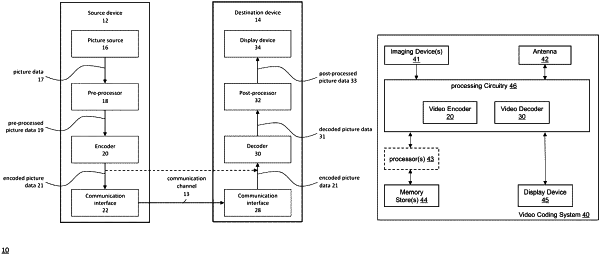| CPC H04N 19/105 (2014.11) [H04N 19/132 (2014.11); H04N 19/137 (2014.11); H04N 19/159 (2014.11); H04N 19/176 (2014.11); H04N 19/46 (2014.11)] | 18 Claims |

|
1. An inter prediction method, comprising:
obtaining an initial motion vector and a reference picture for bi-prediction;
obtaining one or more sets of candidate sample positions in the reference picture according to a plurality of candidate motion vectors, wherein each candidate motion vector is derived based on the initial motion vector and each preset motion vector offset, and wherein each set of candidate sample positions corresponds to each candidate motion vector;
obtaining each set of sample positions from each set of candidate sample positions;
computing a matching cost for each candidate motion vector within each set of sample positions;
obtaining a refined motion vector based on the computed matching cost of each candidate motion vector; and
obtaining prediction values for a current block based on the refined motion vector wherein a zipper pattern of positions of interpolated samples in a set of the candidate sample positions are chosen as the set of sample positions, wherein even parity rows produce first predicted samples at a predetermined number of contiguous sample positions that are left (or right) justified, and odd parity rows produce predicted samples at the pre-determined number of contiguous sample positions that are right (or left) justified, respectively.
|